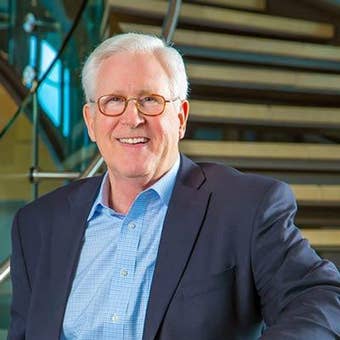Fox Business Flash top headlines for December 15
Fox Business Flash top headlines are here. Check out what's clicking on FoxBusiness.com.
Slowly, the star’s points rotate, bathing the wide-eyed spectators in its brilliance. As I look at the magnificent, multicolored interpretation of the Star of Bethlehem in the Grand Hall of Museum of the Bible, where I serve as CEO, I reflect on the human need for light.
A global pandemic, racial injustice, political strife — it feels like the darkness will never lift.
And in this particularly difficult holiday season, we need light more than ever.
Of course, neither Christianity nor Christmas have a monopoly on lights. Peoples of differing faiths and cultures incorporate lights into their worship ceremonies, rituals and holidays.
Last week, Jews around the world began the observance of Hanukkah, the yearly commemoration of the Macabbean revolt in which a small group of Jews reclaimed the Temple in Jerusalem from their enemies.
For each night of Hanukkah, a candle is lit on the menorah in remembrance of the menorah that remained miraculously lit for eight days while the fierce battle for the Temple raged. For Jews, the menorah’s light reminds them to have hope — to remember that God will continue to provide for and vindicate them even when circumstances seem impossible.
It seems there is a universal awe of and appreciation for light.
This is why I find the Bible so fascinating — it tells us light is not merely a thing, but a person. Light is an integral part of the Nativity story.
On the night of Jesus’s birth (which was not Dec. 25, though many Christians celebrate it on that day), a group of shepherds were “out in the field, keeping watch over their flock by night” (Luke 2:8). Suddenly, they were surrounded by a blazing, terrifying light and heard words they probably never imagined they would hear:
“...an angel of the Lord appeared to them, and the glory of the Lord shone around them, and they were filled with great fear. And the angel said to them, ‘Fear not, for behold, I bring you good news of great joy that will be for all the people. For unto you is born this day in the city of David a Savior, who is Christ the Lord. And this will be a sign for you: you will find a baby wrapped in swaddling cloths and lying in a manger’” (Luke 2:9-12 ESV).
And the light compelled them to find the infant Jesus.
More from Opinion
Some years later, supernatural light would again appear in the sky. Magi or “wise men” came from the East seeking the child-Savior, led by a star:
“And behold, the star that they had seen when it rose went before them until it came to rest over the place where the child was. When they saw the star, they rejoiced exceedingly with great joy. And going into the house, they saw the child with Mary his mother, and they fell down and worshiped him. Then, opening their treasures, they offered him gifts, gold and frankincense and myrrh” (Matthew 2:9b-11).
CLICK HERE TO GET THE OPINION NEWSLETTER
The heavenly light led them to the Light. As Jesus himself said when he began his earthly ministry, “I am the light of the world. Whoever follows me will not walk in darkness, but will have the light of life” (John 8:12).
“Light” has numerous definitions, but perhaps the most important is this: “something that makes vision possible.” Think of the relief that comes when a dark space is suddenly illuminated, even by the tiniest flame.
Jesus is the Light who helps us see in the darkness. This is what Christians around the world celebrate each Christmas.
CLICK HERE TO GET THE FOX NEWS APP
There is nothing inherently holy, special or even Christian about Christmas lights or candles. At Museum of the Bible, putting up Christmas lights is our way of saying, “We still have hope.” And every time I walk into the Grand Hall, seeing the Christmas lights causes me to put my faith, the world and this year in perspective.
We don’t know what lies ahead. But we know darkness is always overcome by light.


